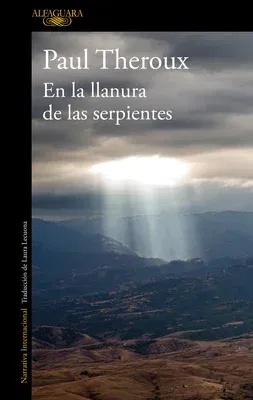«--¿Cómo se llama este pueblo, señor?
**
--Es San Juan Bautista Coixtlahuaca --dijo--. Allá está el viejo
convento. Era una iglesia rota, enorme, hueca y solitaria.
**
--¿Qué significa Coixtlahuaca?
**
--El llano de las serpientes.»**
Paul Theroux ha recorrido el mundo en busca de las historias y los
pueblos que dan vida a los lugares que llaman hogar. Ahora, mientras los
debates sobre inmigración hierven en todo el mundo, Theroux se ha
propuesto explorar un país clave para comprender el discurso global
actual: México.
Con la misma sensibilidad humanizadora que lo caracteriza, el legendario
escritor de viajes recorre toda la frontera entre Estados Unidos y
México, se adentra en las carreteras de Chiapas y Oaxaca, visita a los
trabajadores de los molinos zapotecas en el altiplano y asiste a una
reunión del partido zapatista para descubrir el mundo rico y
estratificado que también hay detrás de un país convulso.
«Hace amigos, va a todos lados, aprende español con otros extranjeros,
ve cómo hacen mezcal, toma clases de cocina y, sobre todo, aprende y
escucha, una de las lecciones del libro. [...] Un libro tan complejo,
tan interesante y sobre todo tan imprescindible.» --Pedro Ángel Palou,
El Heraldo
ENGLISH DESCRIPTION
The legendary travel writer drives the entire length of the US-Mexico
border, then takes the back roads of Chiapas and Oaxaca, to uncover the
rich, layered world behind the everyday headlines.
Paul Theroux has spent his life crisscrossing the globe in search of the
histories and peoples that give life to the places they call home. Now,
as immigration debates boil around the world, Theroux has set out to
explore a country key to understanding our current discourse: Mexico.
Just south of the Arizona border, in the desert region of Sonora, he
finds a place brimming with vitality, yet visibly marked by both the US
Border Patrol to the north and mounting discord from within. With the
same humanizing sensibility that he employed in Deep South, Theroux
stops to talk with residents, visits Zapotec mill workers in the
highlands, and attends a Zapatista party meeting, communing with people
of all stripes who remain south of the border even as family members
brave the journey north. From the writer praised for his "curiosity and
affection for humanity in all its forms" (The New York Times Book
Review), On the Plain of Snakes is an exploration of a region in
conflict.

